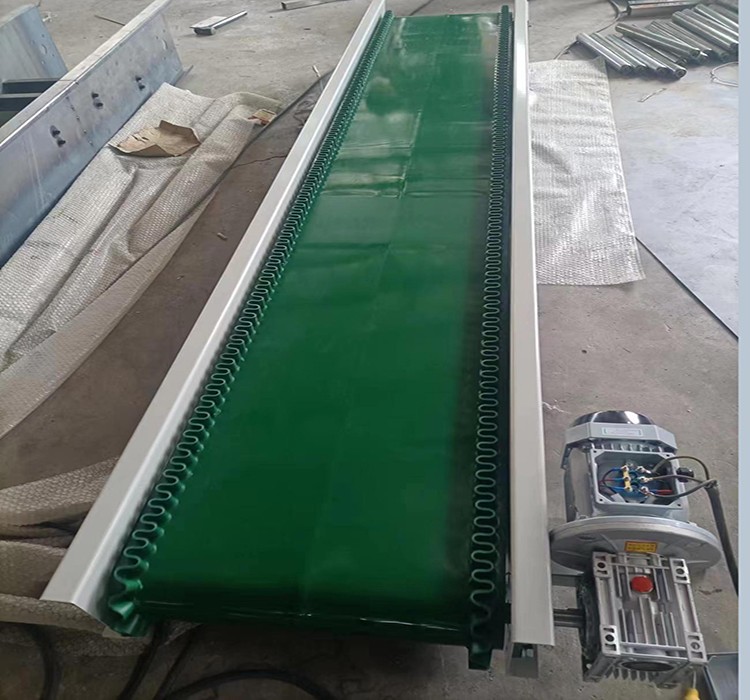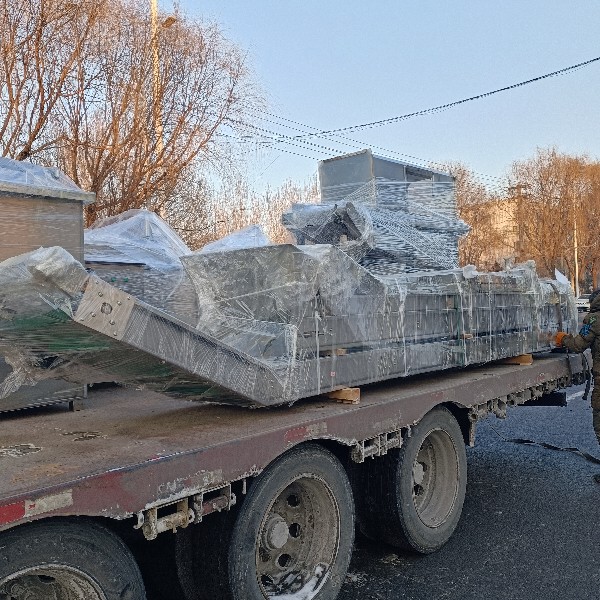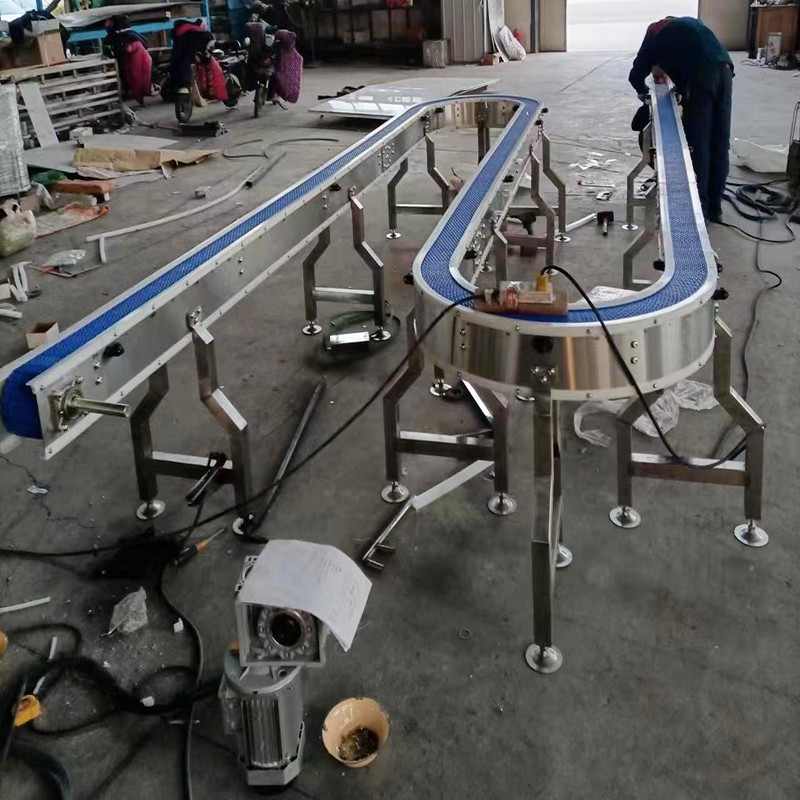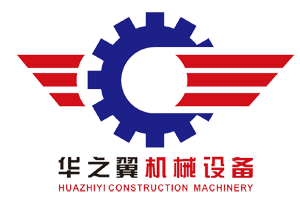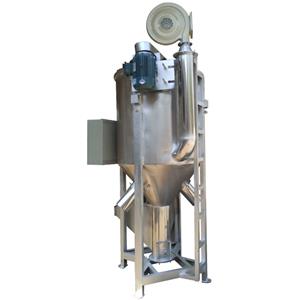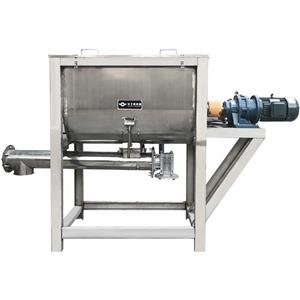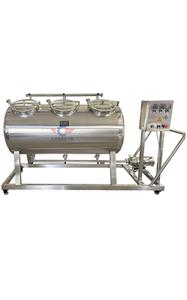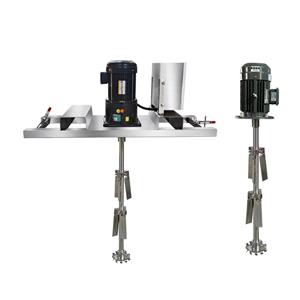Today, let me introduce the functions of a belt conveyor
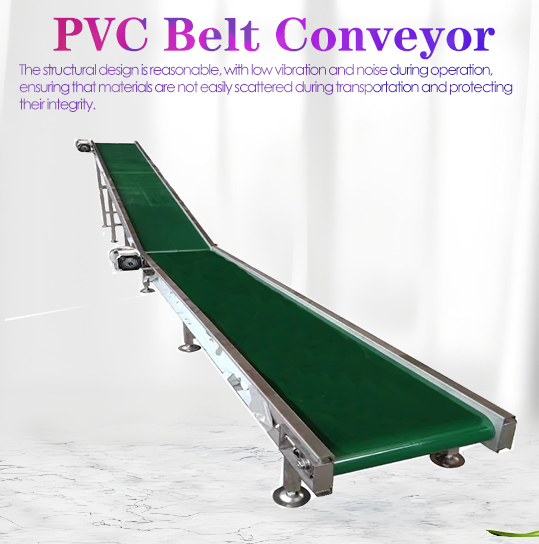
Belt conveyors have strong conveying capacity, long conveying distance, simple structure and easy maintenance, and can easily implement programmed control and automated operation. They are suitable for various industries such as electronics, hardware, machinery, chemical industry, food, forestry, mining, rubber, etc. Belt conveyors transport a wide variety of materials and have diverse structural forms In addition to being used for conveying ordinary materials, it can also be full It has characteristics such as oil resistance, heat resistance, corrosion resistance, and anti-static Specially required material transportation.
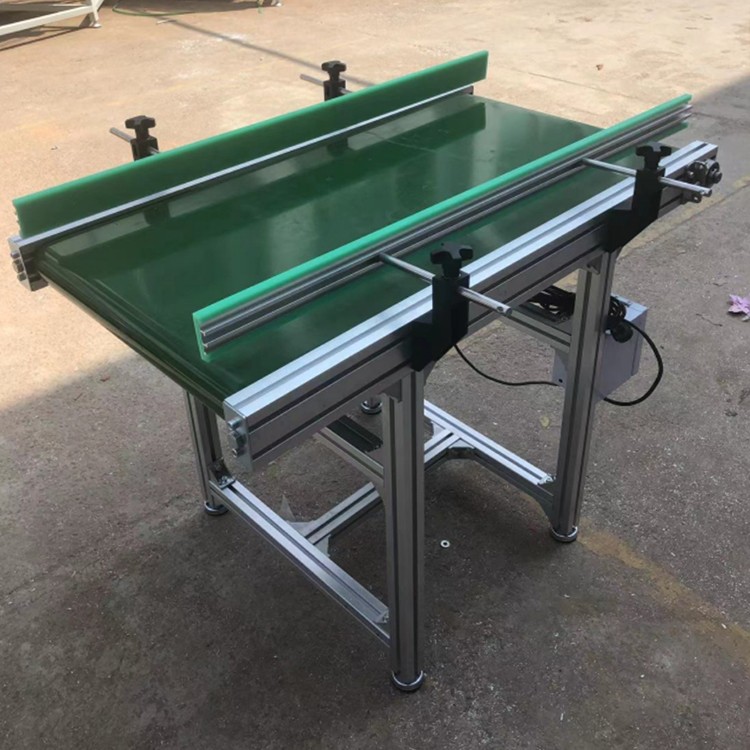
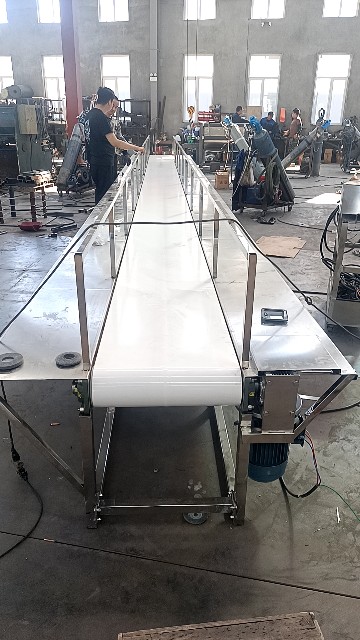
The belt conveyor is mainly composed of a frame, a conveyor belt, belt rollers, a tensioning device, a transmission device, etc. Conveyor belts are divided into PVC conveyor belts, PU conveyor belts, plastic chain plate conveyor belts, modular mesh conveyor belts, nylon conveyor belts, PTFE conveyor belts, and stainless steel conveyor belts according to their materials.
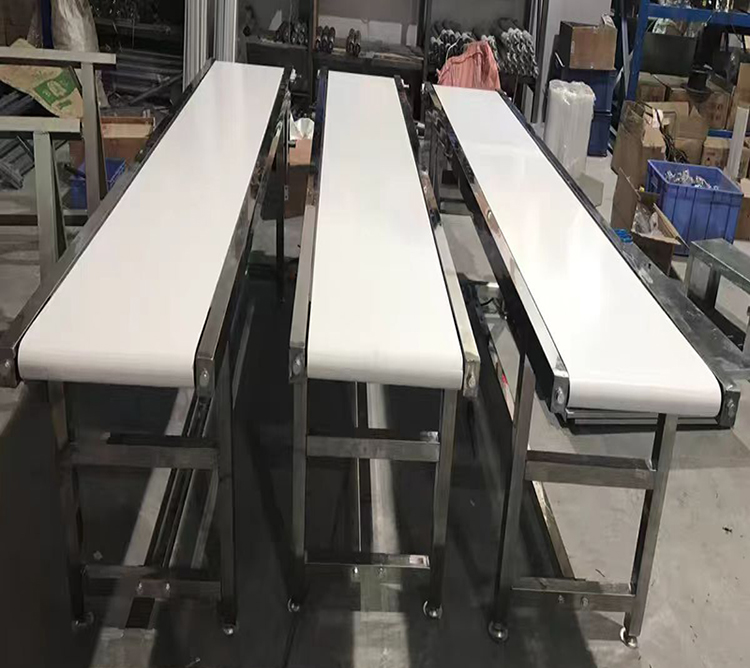
Technical parameters of belt conveyor:
1. The main conveying forms are: parallel conveying and climbing conveying.
2. The driving form is: motor-driven conveying form.
3. The commonly used width of the belt is 100-2000MM, and it can also be customized according to customer requirements.
4. The materials of conveyor belts include rubber belts, PVC belts, canvas belts, food belts, etc.
5. The forms of conveyor belts include: barrier conveyor belt, fence conveyor belt, skirt conveyor belt, flat belt, and anti-skid belt.
6. The size of the workbench is customized according to the user, and the line support includes stainless steel, aluminum profiles, carbon steel spray coating, etc.
7. The conveying speed is generally 0.1-10M/min; Speed regulation or fixed speed can also be used according to user needs.
8. The speed regulation methods include: frequency conversion speed regulation/stepless speed regulation, electronic speed regulation, etc.
9. The materials of the belt frame include carbon steel, stainless steel, and aluminum profiles.
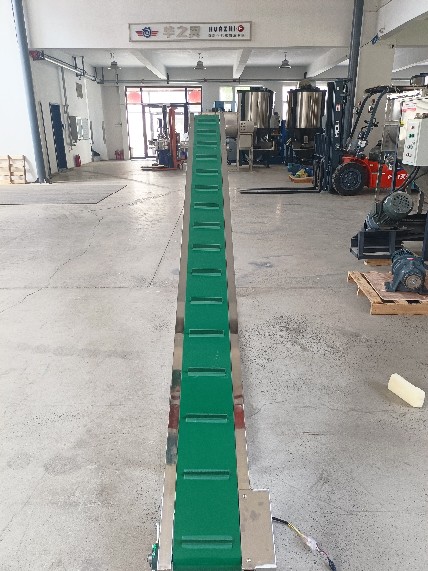

Characteristics of belt conveyor:
1. The driving methods include: reduction motor drive, electric drum drive;
2. The speed regulation methods include: frequency conversion speed regulation, stepless speed regulation;
3. Compact structure, small footprint, easy maintenance;
4. The equipment operates reliably, has a large conveying capacity, a long conveying distance, and can be used for multi-point material loading and continuous conveying;
5. The conveyor belt is made of various materials such as rubber, plastic, PVC, PU, etc. It is easy to clean, corrosion-resistant, and has a long service life;
6. Easy to operate, unobstructed, easy to maintain, horizontally arranged, and capable of inclined conveying, it is an ideal equipment for conveying grid slag;
7. This device can be linked with supporting equipment for easy control, and can also be connected to a control box on site.
